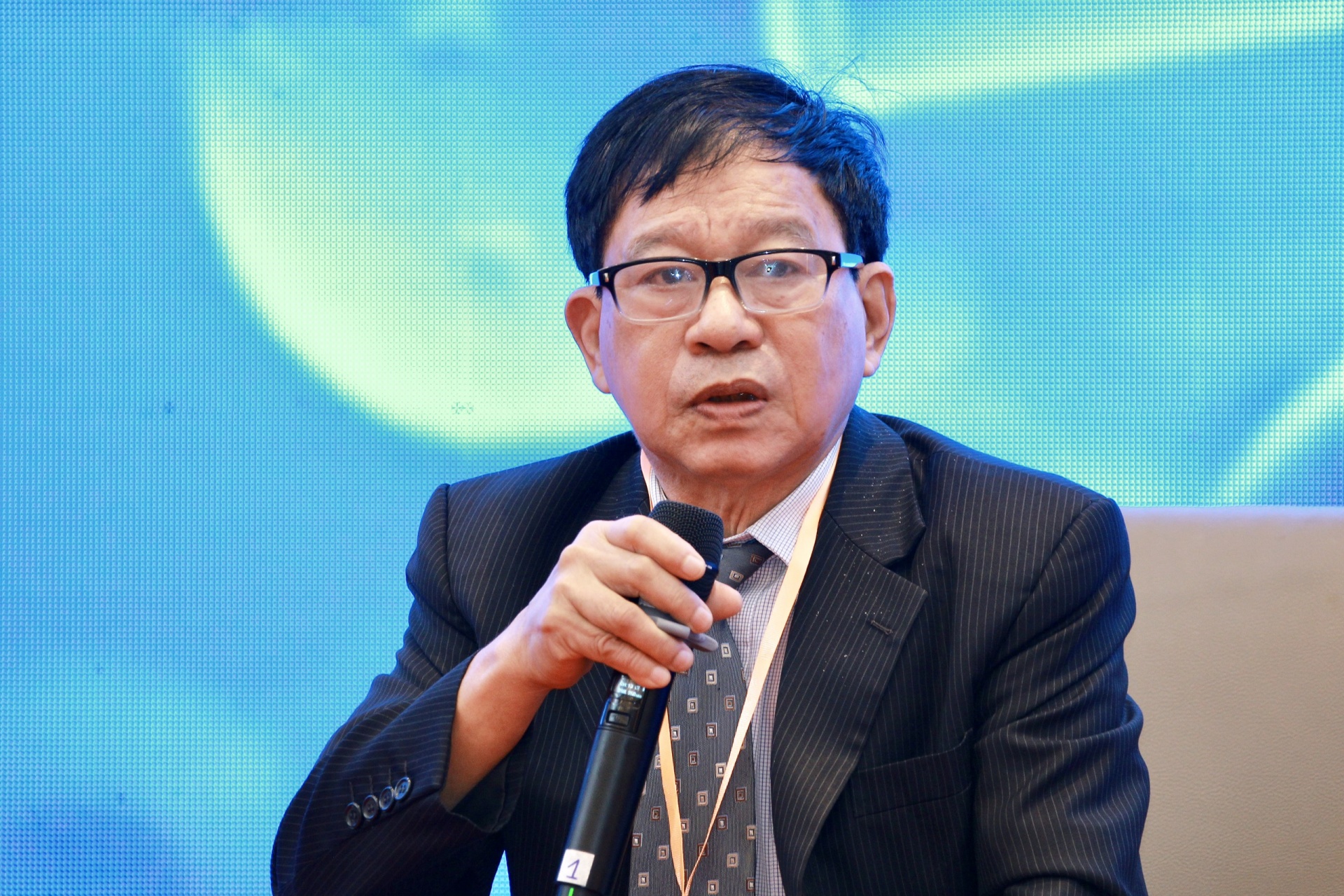Powering innovation for sustainable pharma-healthcare development
 |
According to Nguyen Hoa Cuong, deputy director of the Central Institute for Economic Development, the pandemic has spurred the development of the care economy in many countries.
In Vietnam, there is a huge demand for healthcare as the country is going through a golden population period and reaching an ageing population. It is clear that the pharma-healthcare industry has a lot of potential for innovation and creativity to bring enormous benefits to the people.
 |
"Beside a 100-million population and a large healthcare system, Vietnam also boasts a strong resource in traditional medicine. We can do a lot to drive innovation in traditional medicine," Cuong said.
Beside opportunities, there are many obstacles to unlocking the full potential of the industry. In particular, Vietnam fails to promote technology transfer between foreign and local enterprises. The value of Vietnamese drugs is low, as most high-value drugs are imported from abroad.
"Under Resolution No.29-NQ/TW, there is a group of tasks related to the development of the self-sustaining technology. To facilitate the goal, we should give priority to the biotechnology industry. We should also speed up investment in technology to close the gap between Vietnam and regional peers in pharma-healthcare innovation," Cuong noted.
Prof. Dr. Nguyen Manh Cuong, deputy director of the Institute of Natural Products Chemistry under the Vietnam Academy of Science and Technology, highlighted the importance of the government's role in promoting innovation in the pharma-healthcare sector.
The government acts as an investor and a state manager to introduce suitable policies to propel the development of the industry. It is vital to introduce comprehensive policies synchronously, with concrete action steps and a clear timeline. At present, the government only invests two per cent of the total budget expenditure in innovation and creativity. The country also faces a shortage of human and financial resources.
 |
He suggested the government should build a specialised region for growing medicine materials to help reduce the price of drug materials. There needs to be a strategy to invest in life sciences and biotech to create new drugs, especially drugs using local medicine materials.
It is also vital to promote partnerships between businesses and scientists. For example, Vinafruit teams up with Taiwanese scientists to research the potential of passion fruit seeds in medicine. Based on Vietnamese herbs and medicine materials, we should develop high-value-added products, he added.
Trinh Van Lau, chairman of Vietnam Pharmaceutical Companies Association, said the pharmaceutical industry in Vietnam had developed rapidly. After 27 years of renovation, the country is now home to 228 GMP factories, of which 51 have foreign investment capital.
"There are seven factories producing vaccines and biological products. Currently, Vietnamese drugs account for 70 per cent of the total quantity on the market, but their value only accounts for 46 per cent. The value of drugs in Vietnam is low. The remaining drugs are mainly imported from abroad," he said.
 |
He added that medicine was a special commodity because it contained high scientific and intellectual content, high use value, and a low content of active ingredients. It can affect human health, so manufacturers need to ensure the safety, efficiency, and quality of drugs.
To develop the pharma-healthcare industry, we should have innovative thinking about generic drug production and renewing technology to create many specific products. Secondly, we should produce raw materials from medicinal herbs. The government should also make efforts to minimise material shortages by introducing a support mechanism for enterprises to invest in the production of raw materials, he said
In the same vein, Luke Treloar, national head of Healthcare and Life Sciences at KPMG Vietnam said, "Vietnam has the potential to become the life sciences hub of Southeast Asia. We've been doing a lot of research lately on how Vietnam can make it happen and where Vietnam should focus. Vietnam is not alone on this journey. The country, along with neighbouring countries, is highly competitive and highly motivated to become a life sciences hub in Southeast Asia."
 |
"We have identified three main areas in which Vietnam should focus its research. Firstly, the country should localise life science production. Secondly, the country should digitise the entire healthcare sector. Thirdly, it should increase the localisation of research and development (R&D) activities," Treloar said.
Vietnam has many opportunities to localise clinical trials, starting at phase three and then moving up the value chain to phases two and one. Vietnam can focus on innovation, intellectual property, and attracting global pharmaceutical businesses."
He added that the global pharmaceutical industry had spent $1 trillion on R&D globally, and only a fraction of that Wwas currently being conducted in Vietnam. If this is promoted, it will bring long-term benefits to the Vietnamese economy.
 | Vietnam at the crossroads: The race to secure pharma investment The first panel session, themed Vietnam at the crossroads: The race to secure pharma investment, from VIR's event Realising Resolution 29: New Approaches for Pharma-Healthcare Development on July 20 drew significant attention. The discussion centred around the quality of labour in the pharmaceutical sector and the strategic decisions that Vietnam faces in its pursuit to attract investment in this vital industry. |
 | VIR to host health conference on July 20 Around 200 representatives from relevant ministries, agencies, international organisations, and the business community, including well-known experts, will gather at a health conference on July 20 to discuss innovative approaches to pharma-healthcare development. |
 | More than 200 participants join VIR's conference on pharma and medical sector Over 200 attendees gathered at the conference to focus discussions on the importance of Resolution No.29-NQ/TW to the future sustainable development of Vietnam’s health system, learning lessons from other nations, identifying where there is room for improvement, and promoting public-private collaborations. |
What the stars mean:
★ Poor ★ ★ Promising ★★★ Good ★★★★ Very good ★★★★★ Exceptional
Related Contents
Latest News
More News
- Government moves to establish International Financial Centre (December 21, 2025 | 21:00)
- Vietnam's IFC to target global investment flows (December 21, 2025 | 18:00)
- Two national hospitals expand capacity with new facilities (December 20, 2025 | 09:00)
- Ha Tinh breaks ground on major Vingroup industrial and energy projects (December 19, 2025 | 18:24)
- EVN launches major power infrastructure projects nationwide (December 19, 2025 | 18:17)
- VAL inaugurates second production line to meet domestic animal feed demand (December 19, 2025 | 16:37)
- Sun Group pioneers urban tram system in Phu Quoc (December 19, 2025 | 15:00)
- Seven major projects launched to drive Hanoi’s next growth phase (December 19, 2025 | 14:00)
- Securing capital and efficiency for Vietnam’s 2026-2030 growth ambitions (December 17, 2025 | 10:00)
- Vietnam bucking trend in the global M&A landscape (December 16, 2025 | 14:20)

 Tag:
Tag:




















 Mobile Version
Mobile Version